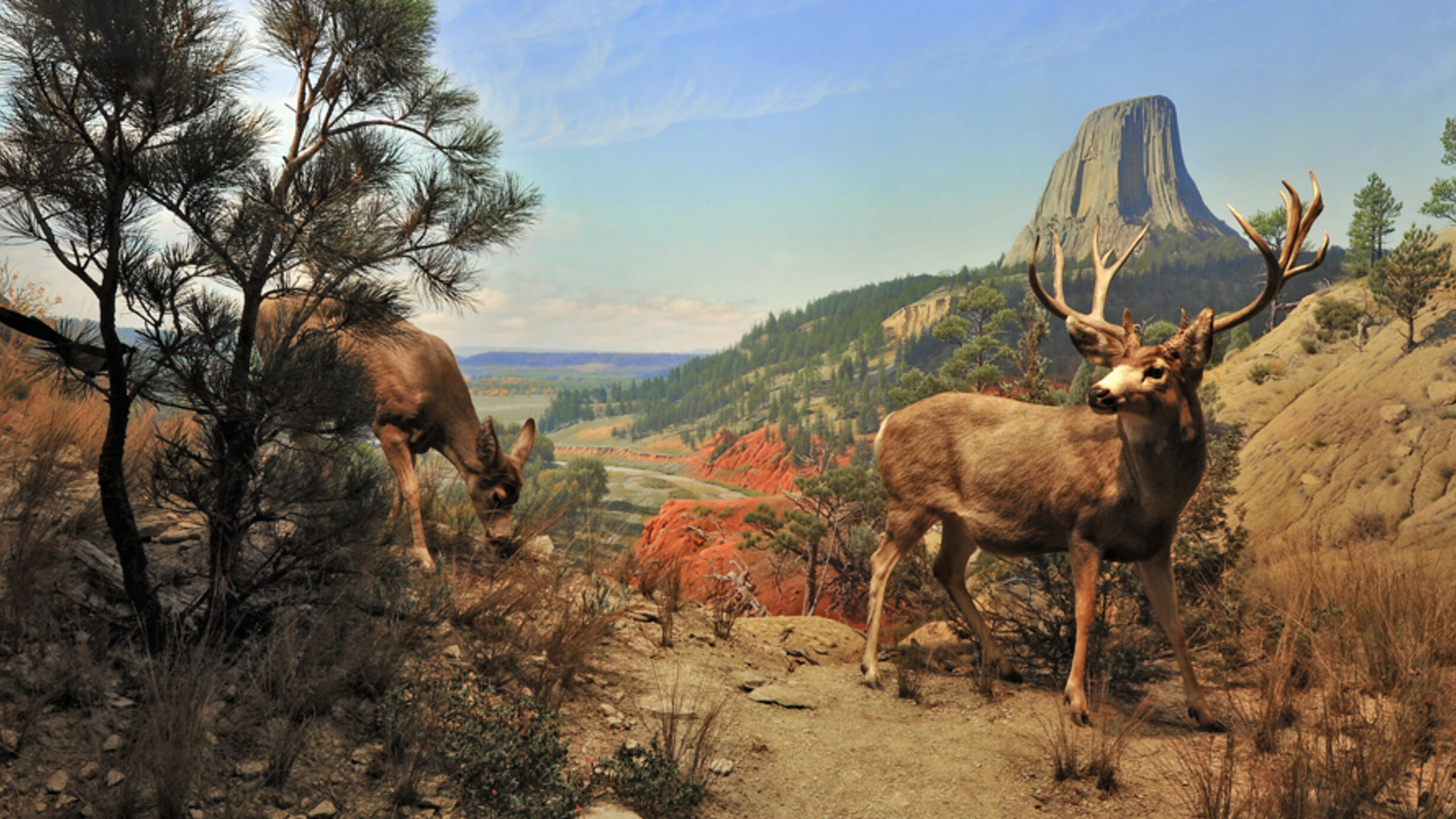Mule Deer
Part of Hall of North American Mammals.

October, Devils Tower, Wyoming
The large, mule-like ears of these deer inspired western explorer William Clark, in 1806, to give these animals their name. Mule deer are also called black-tailed deer after the color of their tails.
The ears and tail distinguish this western deer from the widespread white-tailed deer, but their gait is particularly different. Unlike white-tailed deer, which run away fast and fluidly when alarmed, mule deer escape by “stotting”— bounding with stiff-legged jumps. By leaping over obstacles,
Devils Tower National Monument
Belle Fourche River, Wyoming
Rising solidly over the soft, broken red sandstone of the Belle Fourche River Valley, Devils Tower has inspired awe for generations. To some Northern Plains tribes, the formation is so remarkable that it figures in their sacred legends. In the late 1800s, a state senator tried but failed to make it a national park. In 1906, President Theodore Roosevelt declared Devils Tower a national monument. It was the first decision of the Antiquities Act, which allows the President to protect culturally and scientifically valuable federal land for generations to come.